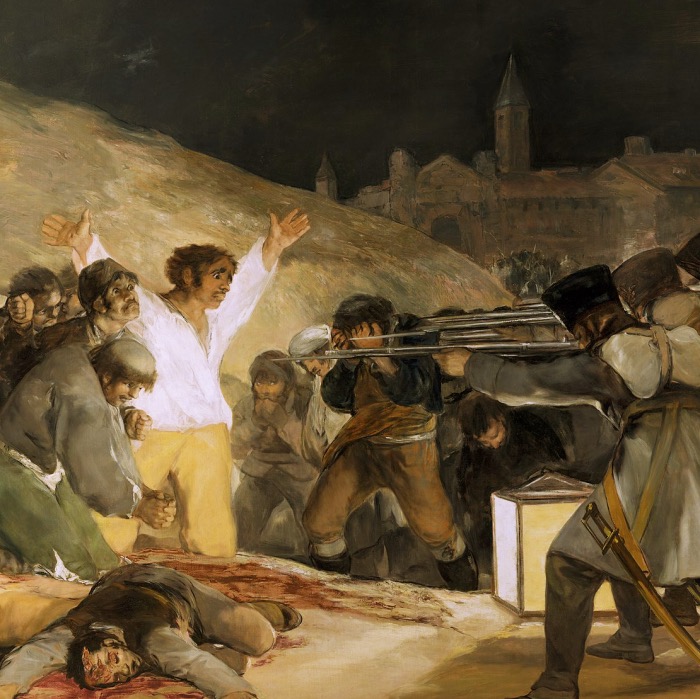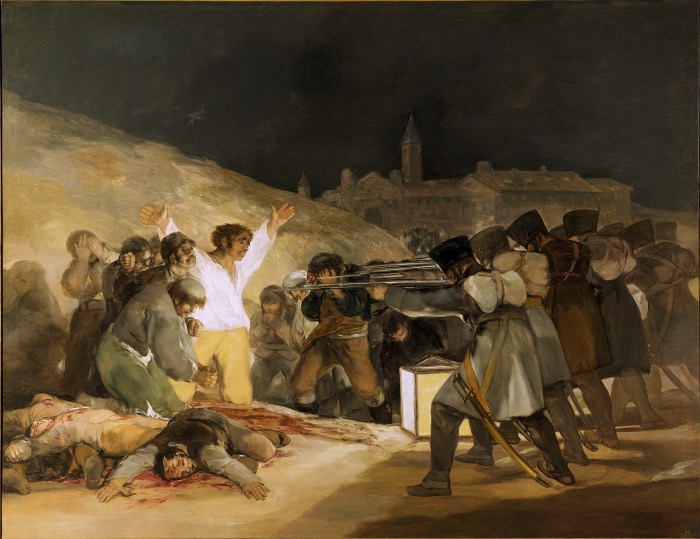
Have you ever wondered what Goya’s painting May 3, 1808 represents and what its significance is?
Art has the power to capture historical moments and make us reflect on them, and this painting is a snapshot of a tragic and unforgettable moment in human history.
Let’s find out together what it represents and some interesting facts.
May 3, 1808 by Goya: what it represents and interesting facts

Il 3 maggio 1808 di Goya
Goya’s May 3, 1808 is one of the most celebrated masterpieces of the great Spanish painter of the 18th and 19th centuries. This work depicts a crucial event in Spanish history: the Revolt of May 2, 1808, an episode that took place during the Napoleonic occupation of Spain.
But what makes this work so special?
ANALYSIS OF GOYA’S MAY 3, 1808
The work was made in 1814 and belongs to the period known as Goya’s “Disasters of War.”
It depicts the execution of insurgent Spaniards by French troops in Madrid.
The protagonist of the work is a kneeling, desperate man with his arms raised in surrender. His figure seems to emerge from the darkness, while the light from French flashlights reveals the menacing face of the soldiers.
The scene is charged with drama and pathos.
DESCRIPTION OF THE WORK
The composition is dominated by a strong contrast between the unarmed individual and the French soldiers surrounding him.
Goya has skillfully used light to highlight the expression of terror and helplessness on the face of the man in the center of the work.
The red of the blood and the off-white shirt are the central points of the canvas and symbolize martyrdom and tragedy.
GOYA’S STORY OF MAY 3, 1808
After the Spanish War of Independence, the work was acquired by the Spanish Crown and later donated to the Prado Museum in Madrid, where it is still kept today. This painting has been an icon in the reconstruction of Spanish history, bearing witness to a period of great suffering and resistance against foreign occupation.
CURIOSITIES
One of the most fascinating curiosities related to “May 3, 1808” is that Goya never visited the site of the event. He painted the work based on third-hand accounts and stories told by eyewitnesses.
This is indicative of the artist’s mastery in capturing the essence of a historical moment without having experienced it directly.

Goya’s May 3, 1808 is an extraordinary work that allows us to immerse ourselves in the history and conflicts of the time. It reminds us that art has the power to preserve crucial moments in our history and make us reflect on them.
The next time you stand in front of a work of art, ask yourself what story it might tell and what emotions it might evoke.

